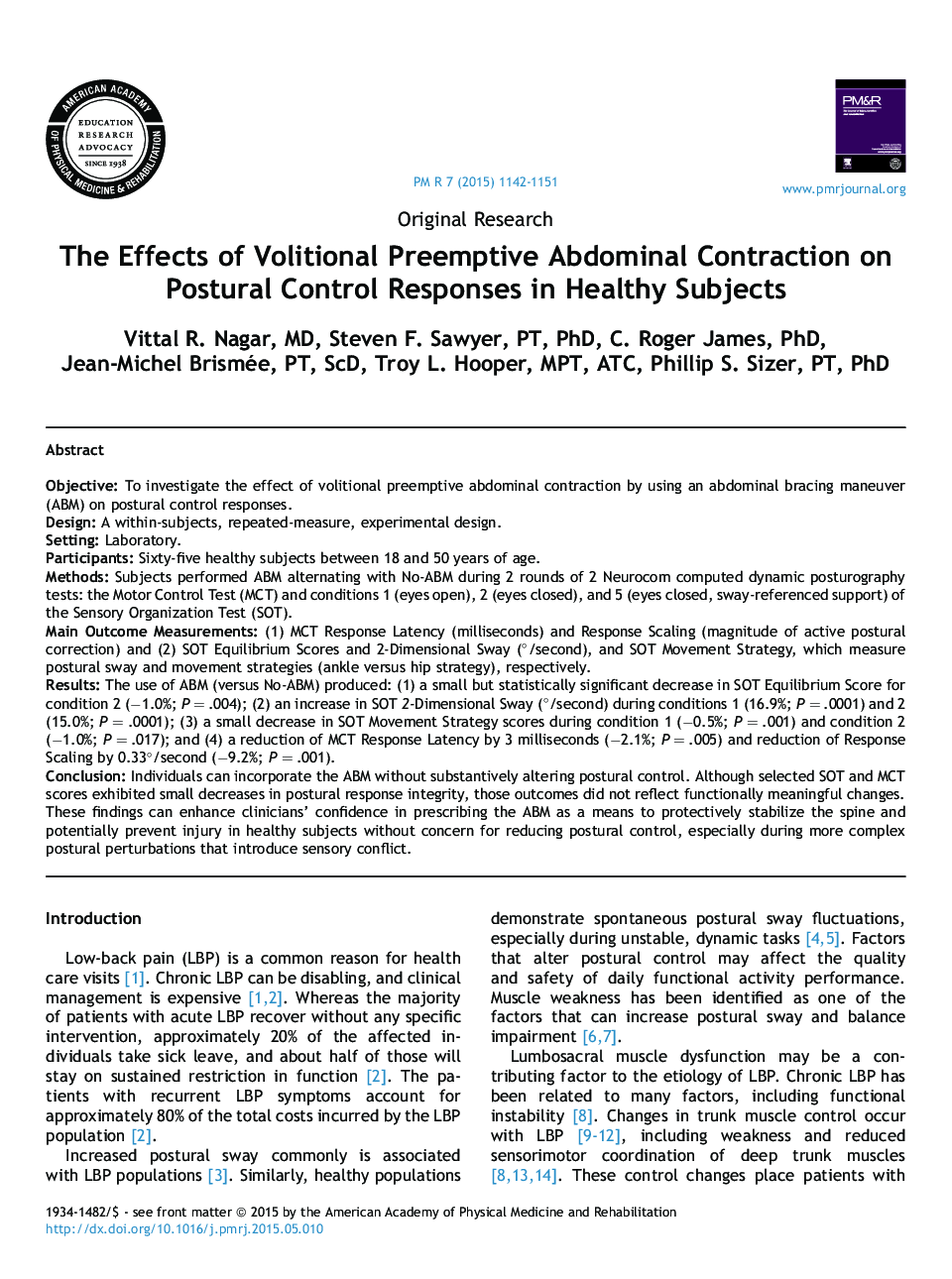| Article ID | Journal | Published Year | Pages | File Type |
|---|---|---|---|---|
| 2705135 | PM&R | 2015 | 10 Pages |
ObjectiveTo investigate the effect of volitional preemptive abdominal contraction by using an abdominal bracing maneuver (ABM) on postural control responses.DesignA within-subjects, repeated-measure, experimental design.SettingLaboratory.ParticipantsSixty-five healthy subjects between 18 and 50 years of age.MethodsSubjects performed ABM alternating with No-ABM during 2 rounds of 2 Neurocom computed dynamic posturography tests: the Motor Control Test (MCT) and conditions 1 (eyes open), 2 (eyes closed), and 5 (eyes closed, sway-referenced support) of the Sensory Organization Test (SOT).Main Outcome Measurements(1) MCT Response Latency (milliseconds) and Response Scaling (magnitude of active postural correction) and (2) SOT Equilibrium Scores and 2-Dimensional Sway (°/second), and SOT Movement Strategy, which measure postural sway and movement strategies (ankle versus hip strategy), respectively.ResultsThe use of ABM (versus No-ABM) produced: (1) a small but statistically significant decrease in SOT Equilibrium Score for condition 2 (−1.0%; P = .004); (2) an increase in SOT 2-Dimensional Sway (°/second) during conditions 1 (16.9%; P = .0001) and 2 (15.0%; P = .0001); (3) a small decrease in SOT Movement Strategy scores during condition 1 (−0.5%; P = .001) and condition 2 (−1.0%; P = .017); and (4) a reduction of MCT Response Latency by 3 milliseconds (−2.1%; P = .005) and reduction of Response Scaling by 0.33°/second (−9.2%; P = .001).ConclusionIndividuals can incorporate the ABM without substantively altering postural control. Although selected SOT and MCT scores exhibited small decreases in postural response integrity, those outcomes did not reflect functionally meaningful changes. These findings can enhance clinicians' confidence in prescribing the ABM as a means to protectively stabilize the spine and potentially prevent injury in healthy subjects without concern for reducing postural control, especially during more complex postural perturbations that introduce sensory conflict.
